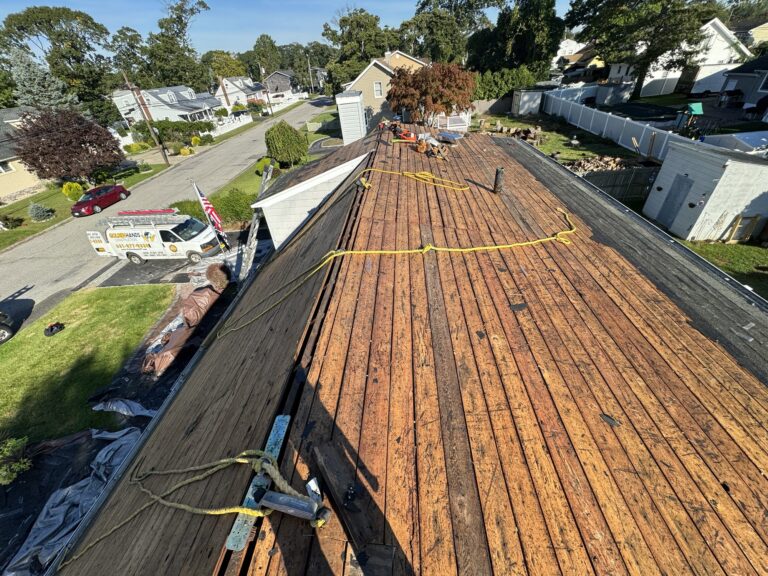Flat roof maintenance tips to avoid costly repairs are essential for homeowners and business owners who want to protect their investment and avoid unexpected expenses. Flat roofs are known for their modern aesthetic, efficient use of space, and cost-effectiveness compared to sloped roofs. However, these benefits come with the responsibility of proper maintenance. Without routine care, small issues can quickly escalate into significant problems, leading to water damage, structural deterioration, and expensive repairs. Ensuring your flat roof remains in top condition requires consistent attention, preventative measures, and timely intervention. By following key maintenance strategies, you can significantly extend the lifespan of your flat roof and reduce the risk of costly repairs.
Regular inspections to identify potential issues
One of the most effective flat roof maintenance tips to avoid costly repairs is to schedule regular inspections. Flat roofs, unlike sloped roofs, do not allow water to run off as easily, which increases the potential for water pooling, debris accumulation, and gradual wear. Regular inspections allow you to identify small issues, such as cracks, punctures, or loose materials, before they become serious problems. Professional inspections should be conducted at least twice a year, ideally during the spring and fall seasons. This ensures that your roof is ready to withstand the challenges posed by changing weather conditions. Inspecting after heavy storms or extreme weather events is also advisable, as these conditions often expose underlying vulnerabilities in the roof’s structure.
During an inspection, it is important to check for signs of water pooling, soft spots, blistering, and cracks in the roofing material. Pay close attention to areas around vents, drains, and other roof penetrations, as these spots are more susceptible to damage. Addressing issues early can prevent water infiltration, which is one of the leading causes of structural damage to flat roofs. While some issues may seem minor, such as small cracks, they can quickly expand under harsh weather conditions. Hiring a professional roofing contractor to conduct a thorough inspection ensures that no detail is overlooked, and necessary repairs can be completed promptly.
Ensuring proper drainage system functionality
Another essential flat roof maintenance tip to avoid costly repairs is to maintain an effective drainage system. Flat roofs have a low slope, making it difficult for water to flow off naturally. This makes it crucial to have a functional drainage system in place. Clogged or damaged drains, scuppers, and downspouts can cause water to pool on the roof, increasing the risk of leaks, mold growth, and roof membrane deterioration. Over time, standing water can weaken the roof’s structure, causing it to sag or collapse in extreme cases.
To ensure your drainage system is working efficiently, conduct routine checks to remove debris, leaves, and dirt that may be blocking water flow. Leaves and branches from nearby trees often accumulate on the roof, especially during the fall season. Cleaning the drains and scuppers regularly prevents blockages and allows water to flow freely. Installing protective drain covers can reduce the frequency of cleanings and prevent large debris from entering the system. If you notice slow drainage or signs of standing water, it is essential to resolve the issue quickly. Professional roofing contractors can assess the cause of the problem and make the necessary repairs to ensure proper drainage.
Repairing cracks, punctures, and membrane damage promptly
Flat roof membranes, often made of materials like EPDM, TPO, or modified bitumen, are designed to provide a watertight barrier. However, exposure to weather, foot traffic, and debris can cause cracks, punctures, and tears in the membrane. Promptly addressing these issues is a crucial flat roof maintenance tip to avoid costly repairs. Small cracks or punctures that go unnoticed can expand, especially during extreme temperature changes when roofing materials expand and contract. This can allow water to seep beneath the surface, leading to water damage, mold growth, and weakened insulation.
If you notice any signs of membrane damage, such as exposed underlayment or small punctures, immediate repairs should be made. While temporary fixes, such as applying roofing tape or sealant, may work for small issues, more extensive damage requires the expertise of a professional roofer. Professional repairs ensure that the membrane remains watertight and that the integrity of the roof is preserved. Routine maintenance and inspections make it easier to detect and address these issues early, preventing them from becoming costly repairs in the future.
Preventing debris accumulation and maintaining a clean roof surface
Maintaining a clean and debris-free flat roof is another critical flat roof maintenance tip to avoid costly repairs. Debris, such as leaves, branches, dirt, and trash, can accumulate on flat roofs and create problems if not removed regularly. This debris can trap moisture against the roof’s surface, promoting the growth of algae, mold, and moss. Over time, these organisms can deteriorate roofing materials and reduce the roof’s lifespan. Trapped moisture also increases the likelihood of water infiltration, which can damage the building’s interior.
Regular cleaning of the roof’s surface prevents these issues. Homeowners and business owners can conduct light cleaning themselves using a broom or leaf blower to clear debris. However, for larger debris or stubborn buildup, it may be necessary to hire a professional roofing contractor. Professional cleaning services use safe methods that do not damage the roof membrane. Avoid using pressure washers, as the high pressure can weaken or puncture the roofing material. By maintaining a clean roof, you create an environment that resists the growth of harmful organisms and prevents moisture-related problems.
Addressing flashing and sealant issues
Flashing and sealants play a vital role in maintaining the waterproof integrity of flat roofs. Flashing is used to create a watertight barrier around roof edges, vents, chimneys, and other penetrations. Over time, flashing can corrode, loosen, or become damaged due to weather exposure. Sealants, which are often applied around vents and joints, can crack or wear down over time. Addressing flashing and sealant issues is a critical flat roof maintenance tip to avoid costly repairs.
During routine maintenance and inspections, check the condition of flashing and sealants. If you notice loose flashing or deteriorating sealants, prompt repairs are necessary. Gaps in these areas can allow water to seep beneath the roof surface, leading to leaks and moisture damage. Reapplying sealant or repairing flashing can restore the roof’s watertight seal. A roofing contractor can assess the overall condition of the flashing and sealants and provide the necessary repairs to ensure long-term protection.
Protecting the roof from foot traffic and mechanical damage
Flat roofs are often used as access points for HVAC systems, satellite dishes, and other rooftop equipment. While flat roofs are designed to support weight, excessive foot traffic can cause punctures, cracks, and wear in the roofing membrane. This is especially true if tools or equipment are dragged across the roof’s surface. To minimize this risk, it is essential to limit foot traffic and protect the roof from mechanical damage.
If rooftop access is necessary, walkways or protective pads can be installed to provide a designated path that reduces pressure on the roofing material. HVAC technicians, contractors, and maintenance workers should be made aware of the proper areas to walk on. Additionally, avoid storing heavy equipment or materials on the roof, as the excess weight can cause stress on the structure. Taking proactive measures to protect your flat roof from mechanical damage helps maintain its integrity and reduces the likelihood of costly repairs.
Hiring professional maintenance services
While some aspects of flat roof maintenance can be handled by property owners, hiring professional roofing maintenance services is a wise decision. Roofing contractors have the tools, experience, and knowledge to identify potential issues before they become major problems. They can conduct comprehensive inspections, perform necessary repairs, and provide cleaning services to keep the roof in top condition. Hiring professionals ensures that maintenance is done thoroughly and safely, reducing the risk of personal injury and further damage to the roof.
Professional roofing companies, like East End Roofing, provide ongoing maintenance plans that ensure your roof remains in optimal condition year-round. These plans typically include inspections, cleaning, debris removal, and prompt repair services. By partnering with a professional roofer, you can rest assured that your investment is protected, and the likelihood of costly repairs is significantly reduced.
Contact East End Roofing for professional roof maintenance
Maintaining a flat roof is essential to avoid costly repairs and preserve the longevity of your investment. Routine inspections, timely repairs, debris removal, and proper drainage are all critical components of a comprehensive roof maintenance plan. East End Roofing understands the importance of preventative maintenance and offers professional services to help you keep your flat roof in top condition. Whether you need an inspection, repairs, or ongoing maintenance, the team at East End Roofing is ready to provide the support you need.
To schedule a maintenance service or learn more about how East End Roofing can protect your flat roof, contact them at (631) 855-2006 or email In**@***********NY.com. Don’t wait until small issues turn into costly repairs. Call today and safeguard your property with proactive flat roof maintenance.
Roof Repair Long Island
Professional Web Development
skylight repair

